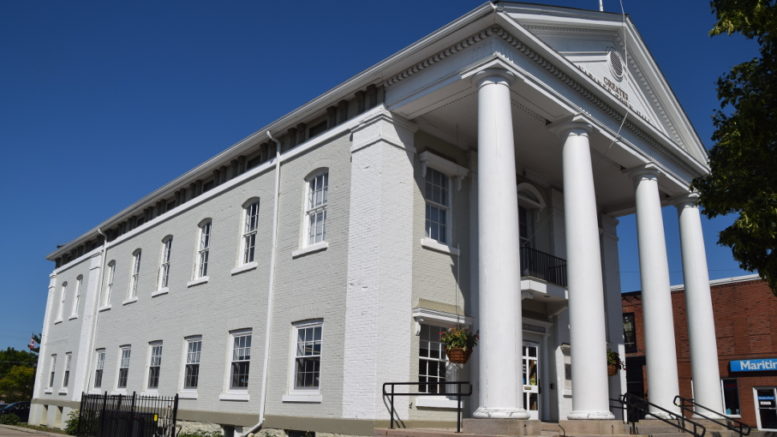Adam Prudhomme
Editor
Urban and rural tax rates were once again a major topic of discussion at Greater Napanee town hall on Tuesday, with council ultimately voting to table a motion that would see the difference between the two rates capped at nine per cent.
When the long-standing issue came up under new business, councillor John McCormack made the motion to cap the difference in taxation rates between at nine per cent, which would deviate from then councillor Max Kaiser’s 2015 motion to phase the difference down to ‘around’ 3.5 per cent over a five year span, which began at 32 per cent.
The decision to table the nine per cent cap was put forward by councillor Bob Norrie with debate expected to resume at the next council meeting on Feb. 11.
“When I was campaigning in a fully rural community, the biggest issue people had was the difference in taxation,” said McCormack, who represents Ward 1. “The (32 per cent) discount had been removed and the way the rural community see it is that they didn’t get anything in return.”
As such, he put forward the motion that council “accept (Greater Napanee Taxation Policy Review Committee member) Axel Thesberg’s proposal that we cut it off at nine per cent which we are at right now rather than going to the fifth year. Some of the reasons for this is there are a lot of items that everybody’s paying for but not everybody gets the advantage of, the CCTVs, the Big Bright Light Show, free wi-fi. This is $60,000-$70,000 a year combined.”
McCormack also pointed to a report from the Ontario Good Roads Association which says urban roads cost an estimated 50 per cent more on average to maintain compared to rural.
“I believe it’s just the fair thing to do,” said McCormack. “We can’t in my opinion go to 32 per cent down to 3.5 per cent and not get anything in return.”
Deputy mayor Kaiser agreed. His 2015 motion also carried the stipulation that they seek a definitive answer as to whether or not policing could be area-rated, which he says is a ‘quagmire’ of an issue.
“I think the proposal for Mr. Thesberg is not simply arbitrary,” said Kaiser. “It certainly represents a large swing from the 32 per cent discount that the rural had close to parity but stops short of parity with recognition with the things that Mr. McCormack has just described.”
Drawing from his experience as a member of the OPP, councillor Terry Richardson agreed rural residents see a different level of policing which should be reflected with a lower tax rate.
“There’s two types of policing, there’s proactive policing and reactive policing,” said Richardson. “I don’t think our rural community gets the same quality of proactive policing that the core, and I hate to say the word, core urban community gets.”
“This could go on forever and ever,” Richardson said of the taxation policy issue. “I guess at the end of the day what I’d like to see is a compromise which I think the nine per cent is, a compromise that is going to bring our rural and urban people together.”
Councillor Ellen Johnson proposed a different option.
“I don’t disagree that a difference in tax rate would be fair,” she said. “I think nine per cent might be a little bit too much of a difference, I’d be much more amenable towards six per cent.”
Councillor Dave Pinnell Jr. reiterated his position of having one rate, noting the difference would be made up through Municipal Property Assessment Corporation (MPAC) assessments.
“They already had a model that is separating urban and rural,” Pinnell Jr. said of MPAC. “If we were to take the exact same home in the country, compared to the exact same house in urban, on the exact same lot size, there would be two different assessed values. Therefore, there’s your difference right there. If we had one rate, it’s clear, it’s consistent and its transparent and we don’t have to worry about this.”
Council acknowledged if they were to cap the difference at nine per cent, they’d then have the issue of determining which homes fall under the ‘urban’ or ‘rural’ umbrella.
Town staff was directed to gather information on whether or not MPAC can classify those boundaries for them and what a nine per cent difference would mean to the overall budget. It’s expected to be discussed further at the Feb. 11 meeting.

